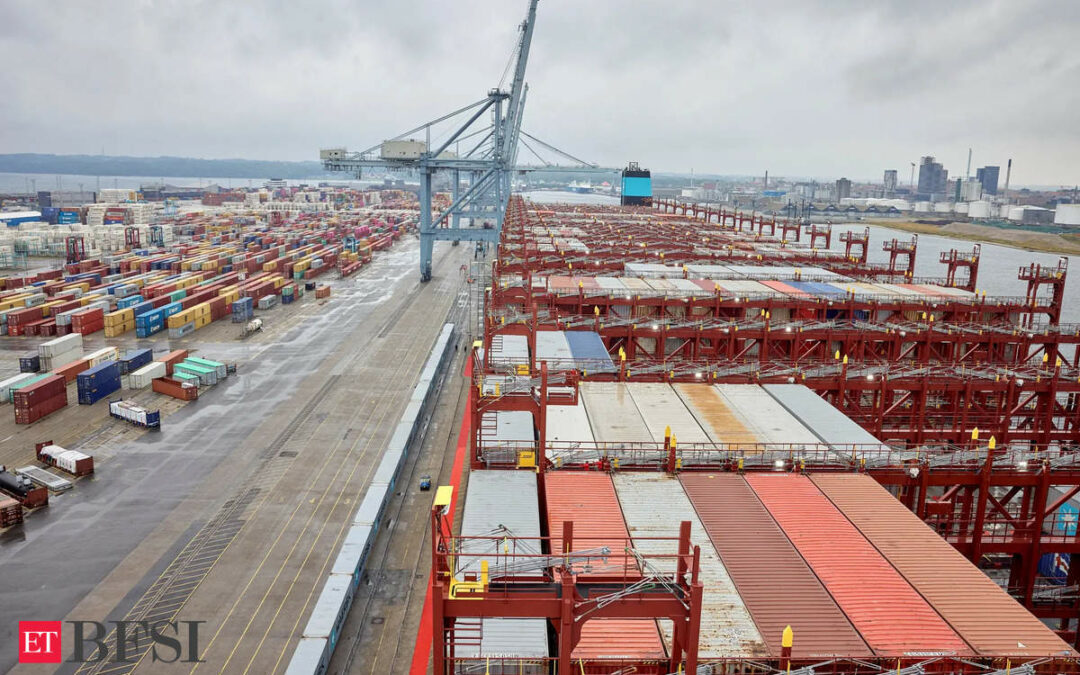The shipping ministry has proposed to launch a non-banking finance company (NBFC) under its Sagarmala initiative to meet the financing needs of the shipping and shipyard sectors, two senior officials familiar with the matter said.
The finance ministry is currently evaluating the proposal, the officials from the shipping ministry told ET. The non-bank lender will also need Reserve Bank of India clearance to carry out lending. The officials expect the shipping ministry to get all the necessary approvals and launch the new NBFC by December.
It will act as a specialist lender to shipping companies and shipyards that often find it difficult to get bank loans, they said, asking not to be named.
The officials did not disclose the likely shareholding structure of the proposed NBFC. It will be established “independently” and its specific structure will be determined after Sagarmala obtains the approvals, they said.
The NBFC is expected to raise funds from banks and the corporate bond market to on-lend.
“Our goal is to offer competitive financing options to the shipping and shipyard sectors,” one of the officials said.
‘Financing constrained for segment’
“In the current economic climate, access to debt financing, particularly for the shipping and shipyard industries, is limited,” said the official. “Based on our recent interactions with the sector, we’ve found that the shipping and shipyard industry currently lacks infrastructure status, and financing is quite constrained for that segment. Therefore, sectoral non-banking financial companies are crucial for the industry’s growth.”
Shipping is emerging as a new investment opportunity in India, but the country does not have a specialist lender for the industry after the demise of Shipping Credit & Investment Corporation of India, said a senior bank official.
The financier that specialised in financing ships, tankers and ports was merged with ICICI in 1997. Unlike the power sector, which has financiers like Power Finance Corp, REC and Indian Renewable Energy Development Agency, shipping and shipyard industry players are dependent on banks for financing needs.
Collateral issue
However, the failure of two of India’s largest shipyards – ABG Shipyard and Bharati Defence (earlier known as Bharati Shipyard) – has made bankers cautious on lending to this sector, the banker said. In shipping, banks don’t accept ships, the main assets for companies in the sector, as collateral, making it tough for them to raise funds.
Outstanding bank loans to the shipping industry totalled ₹7,019 crore as on June 28, which were 3.7% lower than June 30 last year, show RBI data. “This NBFC will be formulated under Sagarmala to give equity and funding support for maritime space. On the equity front, we have invested now. There is a need for lending as well in light of vision for the sector,” the official said. The proposal has been moved to the Ministry of Finance and “is being very seriously considered”.
Under the Sagarmala national programme launched in 2015, as many as 839 projects worth ₹5.8 lakh crore have been undertaken across five key areas: port modernisation & fresh development, connectivity enhancement, port-led industrialisation, coastal community development and coastal shipping and inland water transport. Under this programme, 262 projects worth ₹1.4 lakh crore have been completed, while 217 projects totalling ₹1.65 lakh crore were under implementation and 360 projects worth ₹2.7 lakh crore were under development, as per Economic Survey for 2023-24.
Eyeing fleet expansion
India is aiming to expand its fleet by at least 1,000 ships in the next decade, according to India Brand Equity Foundation, a trust established by the Department of Commerce. It is putting a special focus on the shipping sector when the growth of Indian-flag shipping tonnage has not been able to keep up with the pace of the country’s trade needs. The number of ships under Indian beneficial ownership has grown over the years but the share of Indian fleet as a percentage of the world’s fleet remains close to 1%, whereas China and Singapore have a share of 5% and 6.5% of global tonnage, according to the Maritime Amrit Kal Vision 2047 report.
Meanwhile, the Ministry of Ports, Shipping and Waterways projects shipyards to be a more than $237 billion (around ₹20 lakh crore) sector by 2047.
A shipping industry executive said there was an acute need of funding for the shipping and shipyard segments because “ships or vessels are not accepted as a collateral” by lenders.
To ease that, the government official said, “With the NBFC for this segment, the asset itself can be a collateral, as their specific requirements, which are long-term in nature, will be addressed. For example, the vessel’s lifespan can be 30 years, which makes it difficult to secure loans from traditional banks. Although, the collateral will be completely secured, potentially including vessels, equipment or shipyard along with other assets of the promoter or the company. Our priority is to establish a risk-free approach, to make it completely secure for us,” he said.










